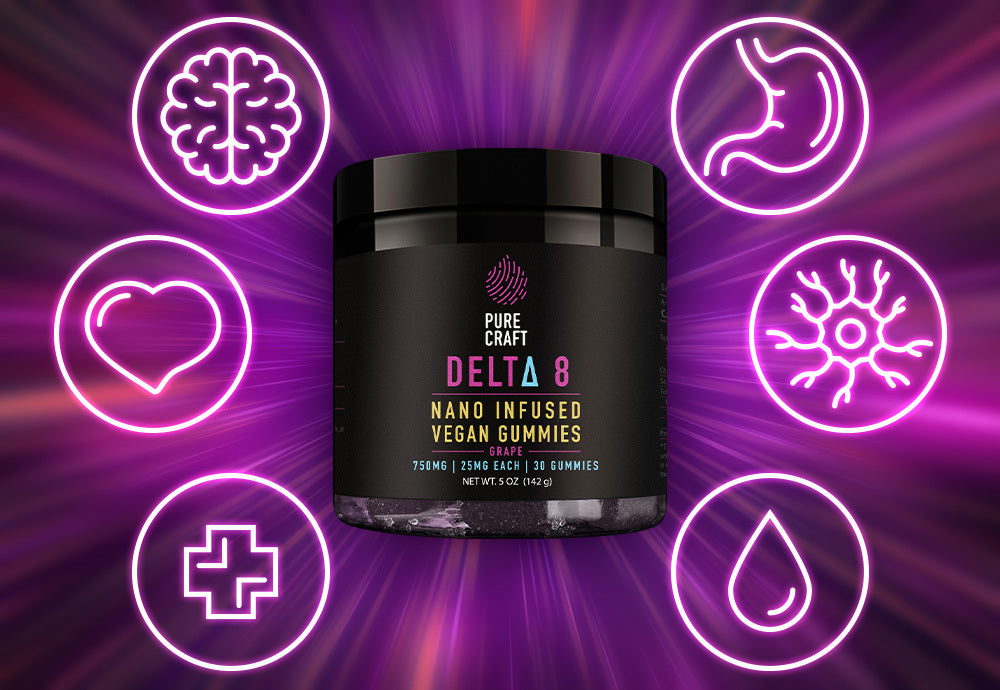Your Cart is Empty
FREE SHIPPING ON ORDERS $70+ | SATISFACTION GUARANTEED
CBD processors dilute CBD oil extract and combine it with additional ingredients to create finished, sellable goods. This is one of the things that makes the wonderfully diverse world of CBD products possible. It’s why you can gum some CBD gummies, drip some CBD drops, and gel with some CBD softgels.
This raises the question: What are those other ingredients? Which, of course, gets your brainsparks flying so that obvious follow-on questions start forming, too:
This is another multi-parter post. This installment will look at the other ingredients in your CBD products that could be considered “GOOD.” (For our purposes, “good” means the ingredient is beneficial or neutral to your wellness.) A second post will tackle the “BAD” and the “UGLY.”

Yes, with all the different incarnations of CBD oil products in circulation, you’re going to encounter countless ingredients. It’d be impossible to cover them all, so we’re going to hit upon ones that are used a lot and that do the body good (or, at least, don’t do the body bad).
Before we get too deep in the weeds, a sensible rule of thumb is that the more pure and natural an ingredient is, the better. Aside from them containing less “bad” elements, natural ingredients tend to be more easily and better absorbed by the body and spur fewer side effects.(1)
Plus, when these elements are derived from nature — like plants and minerals — they may provide extra wellness perks. This is because they bear their own nutritional profiles — lots of vitamins, minerals, and other body-loving nutrients inside! If they aren’t hard at work serving up additional benefits, they’ll just be rather neutral ingredients. (So it’s probably legit to assume they won’t harm you.)
We’ll start here because stabilizers and preservatives are pretty fundamental. In some form, they’re probably gonna be in your CBD products. And that’s OK. “Preservative” and “stabilizer” aren’t necessarily dirty words — if they’re the right kind.
Stabilizers and preservatives are designed to do several important things, including:
That’s some heavy lifting!
So what ingredients could be classified as good preservatives and stabilizers? Here are some you’ll surely see — and can be thankful for:
Grouping these guys together because ingredients that contribute to the taste/smell/appearance often do double or triple duty. For example, mint can add flavor and fragrance to CBD drops; elderberry extract can add flavor and color to CBD gummies.
Flavorings, aromatics, and colorants are used to mask the OG taste, smell, and/or look of CBD (that comes from other cannabis compounds, like terpenes and flavonoids). Alternately, these product additions can provide a more complex palate for your senses — to boost the overall experience.
This is the total wildcard category. CBD product makers toss in all kinds of other ingredients in an attempt to achieve specific results — like helping to bolster the immune system, support sleep, or layer in pain relief. Below is just a tip-of-the-iceberg sampling, to give you an idea.

We’ve said it before, and we’ll keep pounding on this. The lynch pin to your buying process is just a little old-fashioned detective work. (Though, hopefully, CBD sellers are making this an easy task for you!)
To confirm that you’re considering a CBD product with truly “good” ingredients, the best place to start is the package. It should clearly and completely list every single thing that went into that product.
Clearly, you need to make sure what you’re looking at is the type of CBD that suits your needs. Assuming you want the federally-legal hemp CBD, opt for one that was domestically sourced from organic industrial hemp.
Then evaluate the secondary ingredients. Presumably, you’ll want to lean towards products crafted with organic and natural substances. You know, things you can easily pronounce or could possibly identify in a book about gardening or geology.
Next, gather other opinions and independent verification. So, ask friends and family if they’ve had a favorable experience with a given CBD product. Check reviews, ratings, and social proof. Consult the certificates of analysis (COA) — ideally from a third-party lab — to validate that the stated cannabinoid profile is what’s indeed in the CBD.
At Pure Craft, we know you’re serious about doing what’s best for your bod. And that includes consuming nothing but the highest-quality CBD products. This isn’t something we take lightly.
That’s why we only use the most superior inputs for our CBD products. We start with organic, USA hemp that’s painstakingly cultivated to be ultra pure. Through proprietary, MIT-research-backed advanced processing we extract the finest possible CBD oil. We then blend that with the best other ingredients around — most coming straight from Mother Earth’s supply depot — to offer you a comprehensive range of CBD products.
But, you don’t have to take our word for all this. The proof is in the glowing testimonials (Check out our Reviews page!), our product labeling and info, and our COAs. You’ll find all the deets you need to back this up.
CBD isn’t the only thing in your CBD oil products. Surprise! (not really) There are usually at least a few other ingredients. Common additional ingredients used in CBD oil products include:
These could be considered GOOD ingredients if they provide wellness benefits or if have no net effect on you. That said, typically natural and organic ingredients are better for you, can boost the absorption of your CBD product by your body, and provoke fewer side effects.
With a little research, you’ll find CBD products featuring healthful ingredients. Start by reading packaging labels and COAs, asking questions of the retailers, and weighing feedback from others’ experiences. Pure Craft products are crafted from the best stuff around — as is evident by our ingredients, COAs, and testimonials.
Check back soon for our post on the BAD ingredients some producers put in their CBD products….
GET YOU GOOD GOOD-FOR-YOU CBD GOODS NOW
References

The cannabis compound CBD has been popping up in Parkinson’s disease (PD) therapy and prevention conversations, propelled by success stories from p...
Read More
CBD is one of the most popular supplements on the market today. But you're a savvy consumer. You know just because something is popular doesn’t mea...
Read More
You know delta-8 as "weed-lite" or the "chillest of the cannabinoids." But what about all the potential health benefits of this unique compound? Wh...
Read More